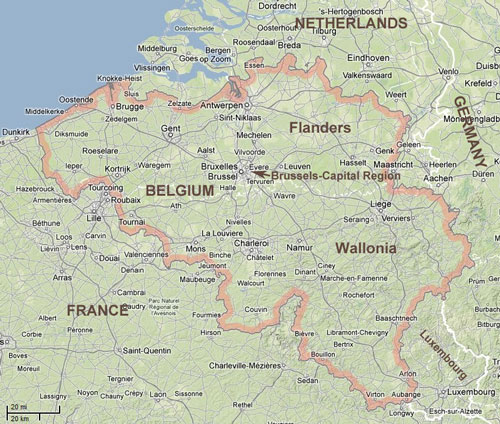Belgium: Leuven Brussels Ghent Bruges Antwerp
Belgium 2004 - Denise and I explore the Flemish part of Belgium (Flanders)
This started off as a three-day business trip that my wife and I extended into a two-week vacation in April 2004. After wrapping up my business in Leuven, we decided to explore as much of Belgium as we could in the remaining ten days.
To the left is a map of Belgium to which I added the Belgian regional names and the names of the surrounding countries. Clicking on the map will open a larger version in a separate window.
Belgium is divided into three federal regions, the Flemish region in the north called Flanders that is primarily Dutch speaking, the Walloon region in the south called Wallonia that is primarily French speaking, and the Brussels-Capital region that is bilingual. The dashed white line that meanders roughly east-west across Belgium in the map divides Flanders and Wallonia. The Brussels-Capital region is an enclave within Flanders.
On this trip we spent our time in the Flemish part of the country and Brussels. We unfortunately did not have time to visit any of the sites in Wallonia. That will have to wait for another trip.
We stayed in the town of Leuven, just to the east of Brussels. From there we made day trips by train to Brussels (French: Bruxelles, Dutch: Brussel) and further west to Ghent (Dutch: Gent) and Bruges (Dutch: Brugge), and north to Antwerp (Dutch: Antwerpen).
Because of the large number of photos in this adventure, I created separate pages for the cities we visited. Navigation between these pages is done by clicking on the Belgium links at the top and bottom of each page or by going sequentially through each city's page using the link in the bottom paragraph of each page's text, e.g. click on "Leuven" in the last paragraph below.
First a note on Belgian beer and Belgian trains. Belgian beer, unlike beer in most other countries with "purity laws" that restrict beer's contents to water, barley malts (and often other grains like rice or wheat), hops, and yeast, often includes other additives that effect the flavor such as fruits and spices. As a result, Belgian beer can be very unique. Needless to say we drank Belgian beer with almost every meal, breakfast excluded. (One had to draw the line somewhere.) There are literally hundreds of Belgian beers, each unique.
-
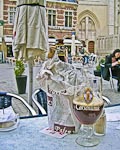
-
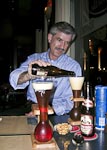
Above are some examples: Corsendonk poored from a bottle with a Champagne-like cork and Kwak poored into the most unusual of glasses.
-
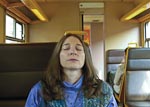
-
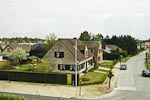
-
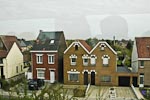
-
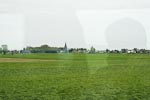
Above are some images taken on the Belgium trains. Denise asleep as we return late one night from walking about Ghent, and some images of the Belgian countryside and the suburbs of Antwerp. Without exception we found that trains to run on time, to be compfortable and clean. There is no reason to rent a car in Belgium unless you want to drive.
First city up: Leuven where we stayed in the Begijnhof Congreshotel and explored a lovely small city that I liken to the Flemish part of Belgium in a microcosm.
Belgium: Leuven Brussels Ghent Bruges Antwerp

